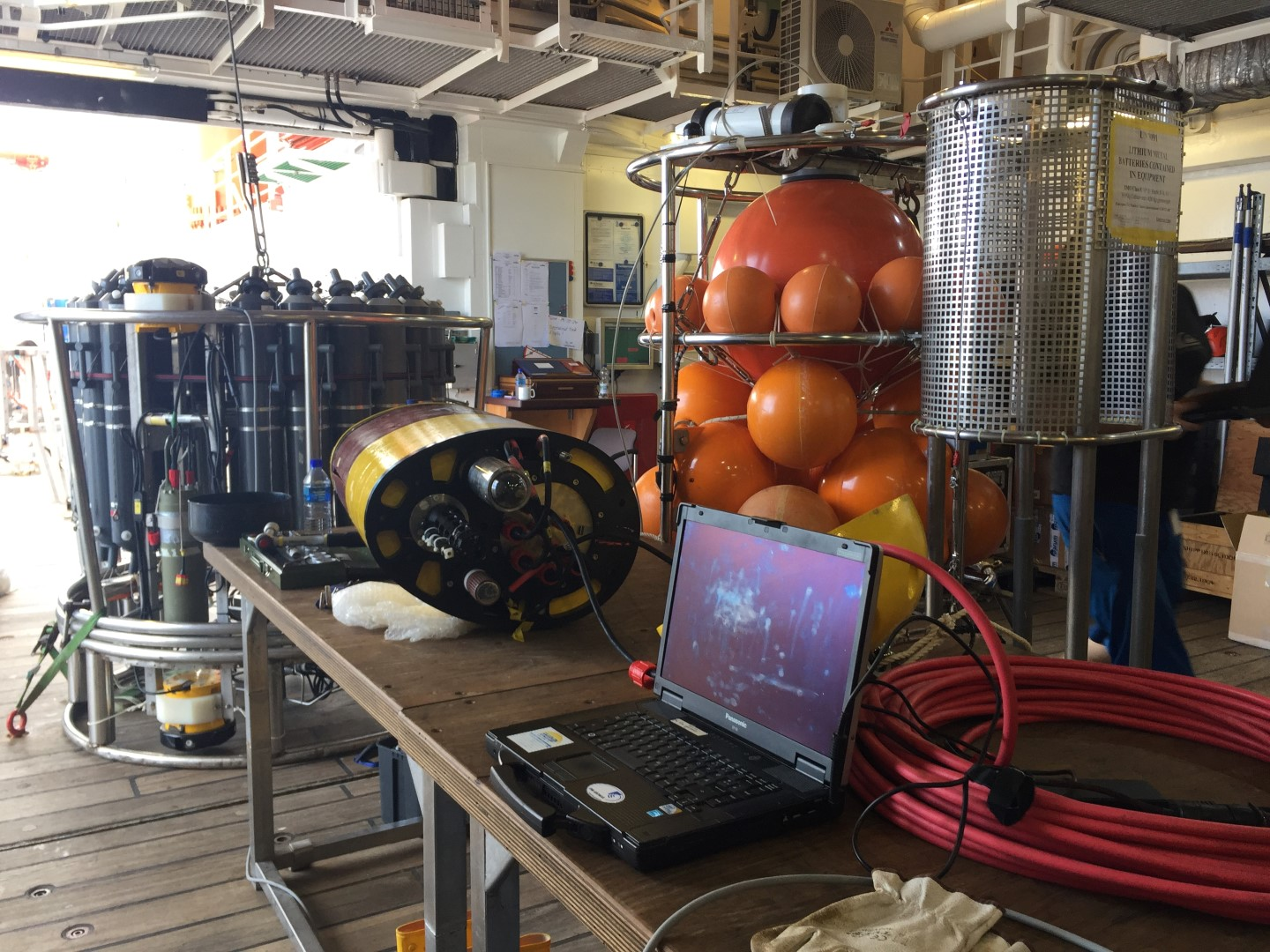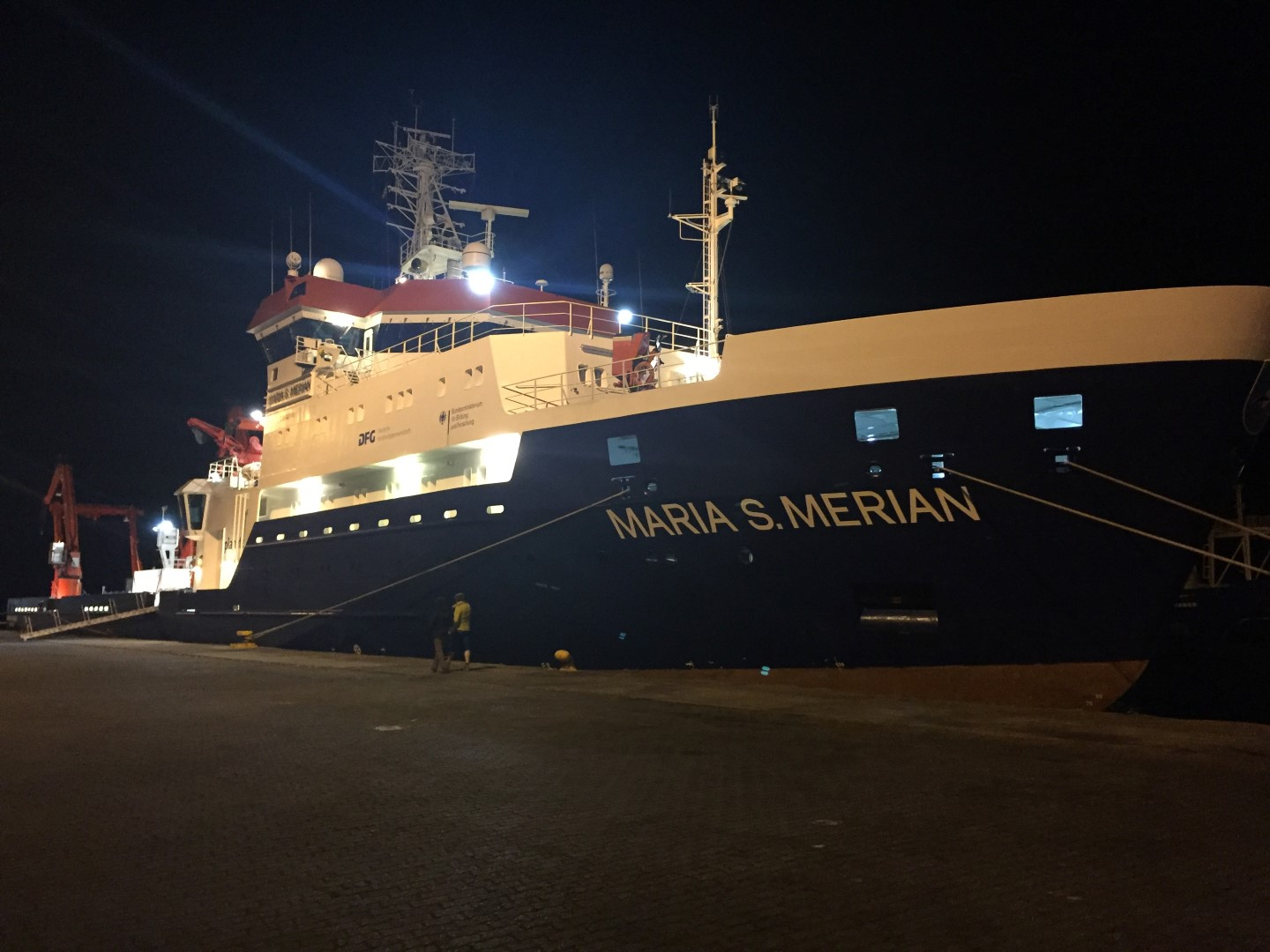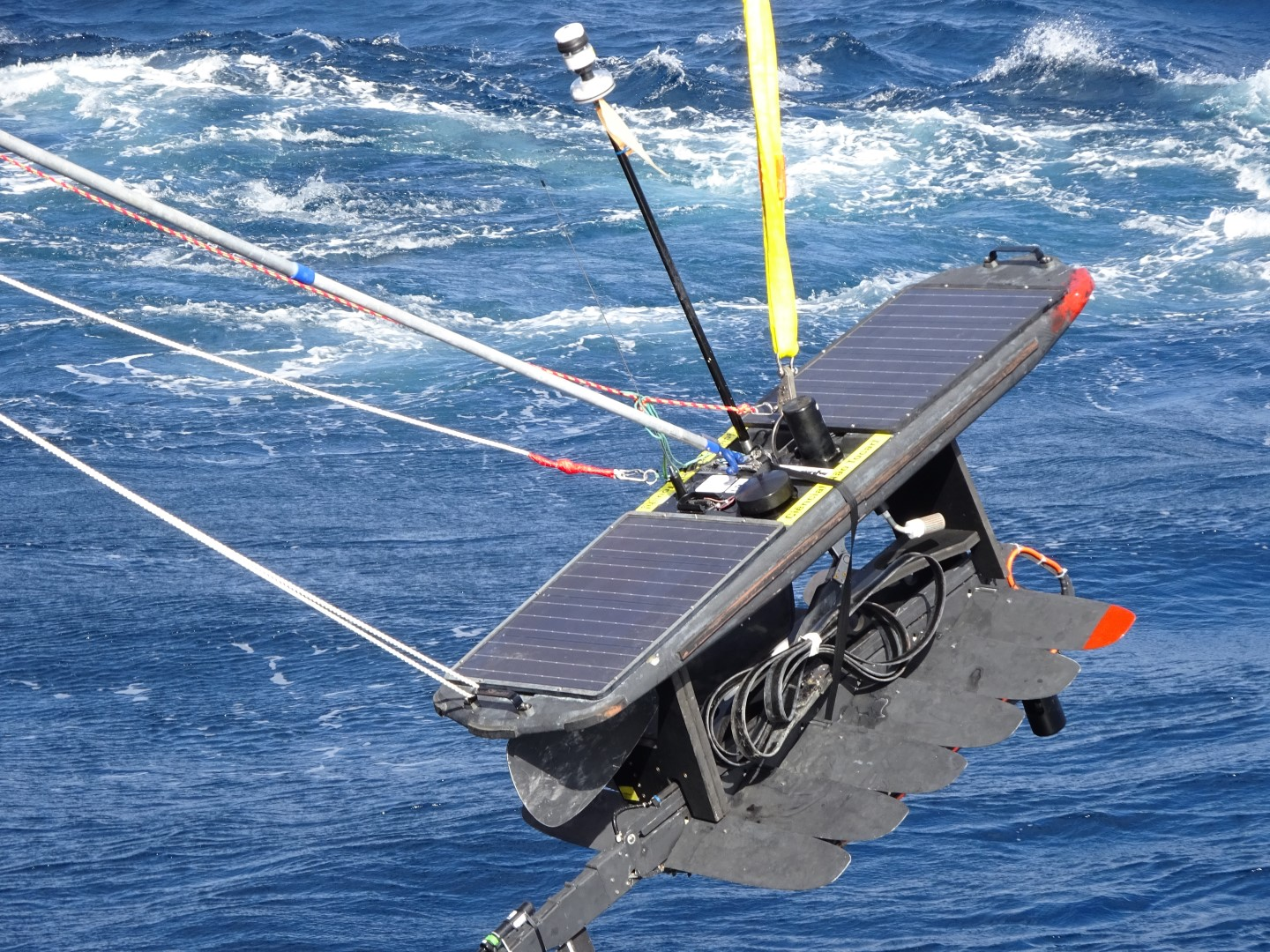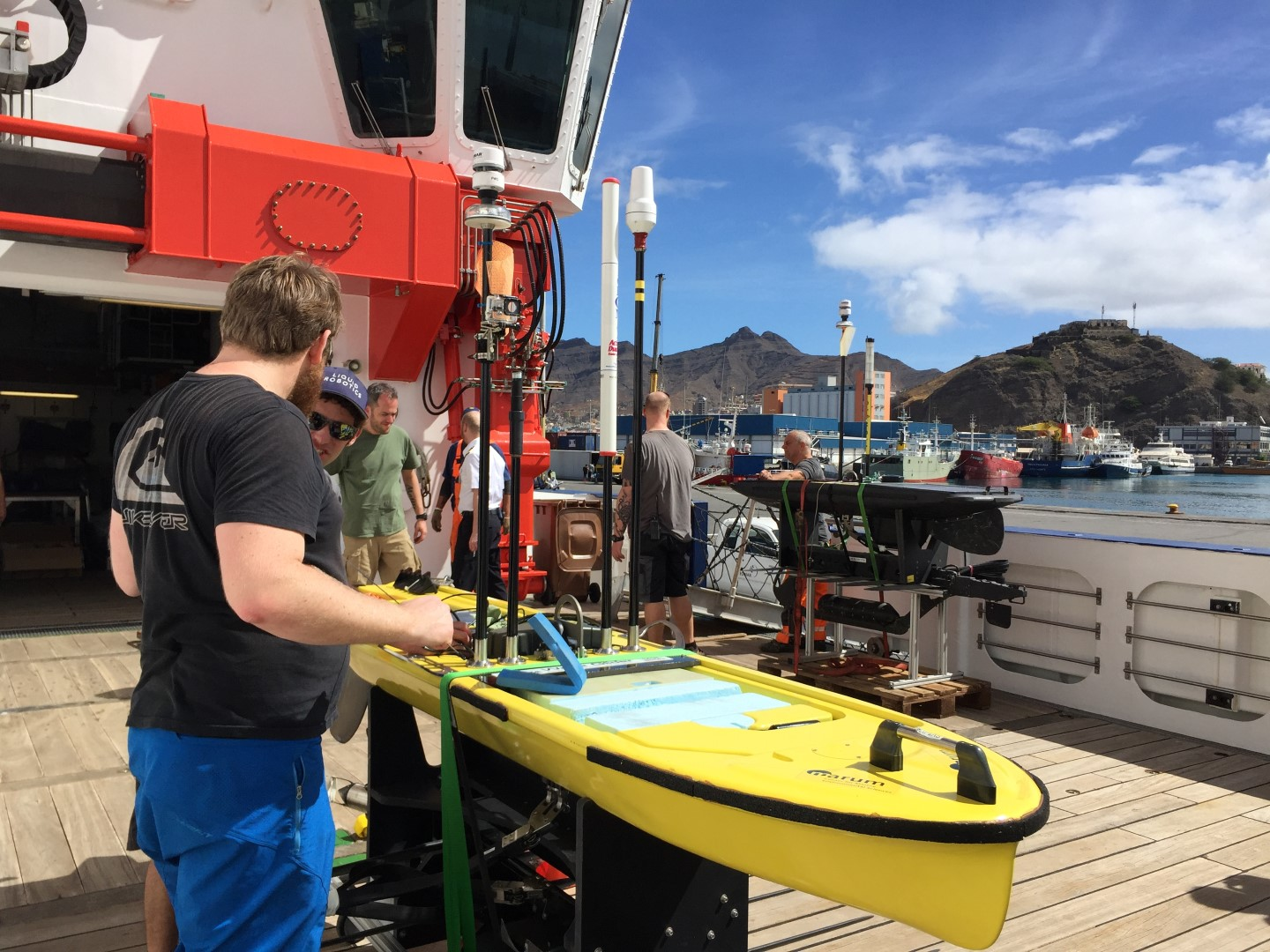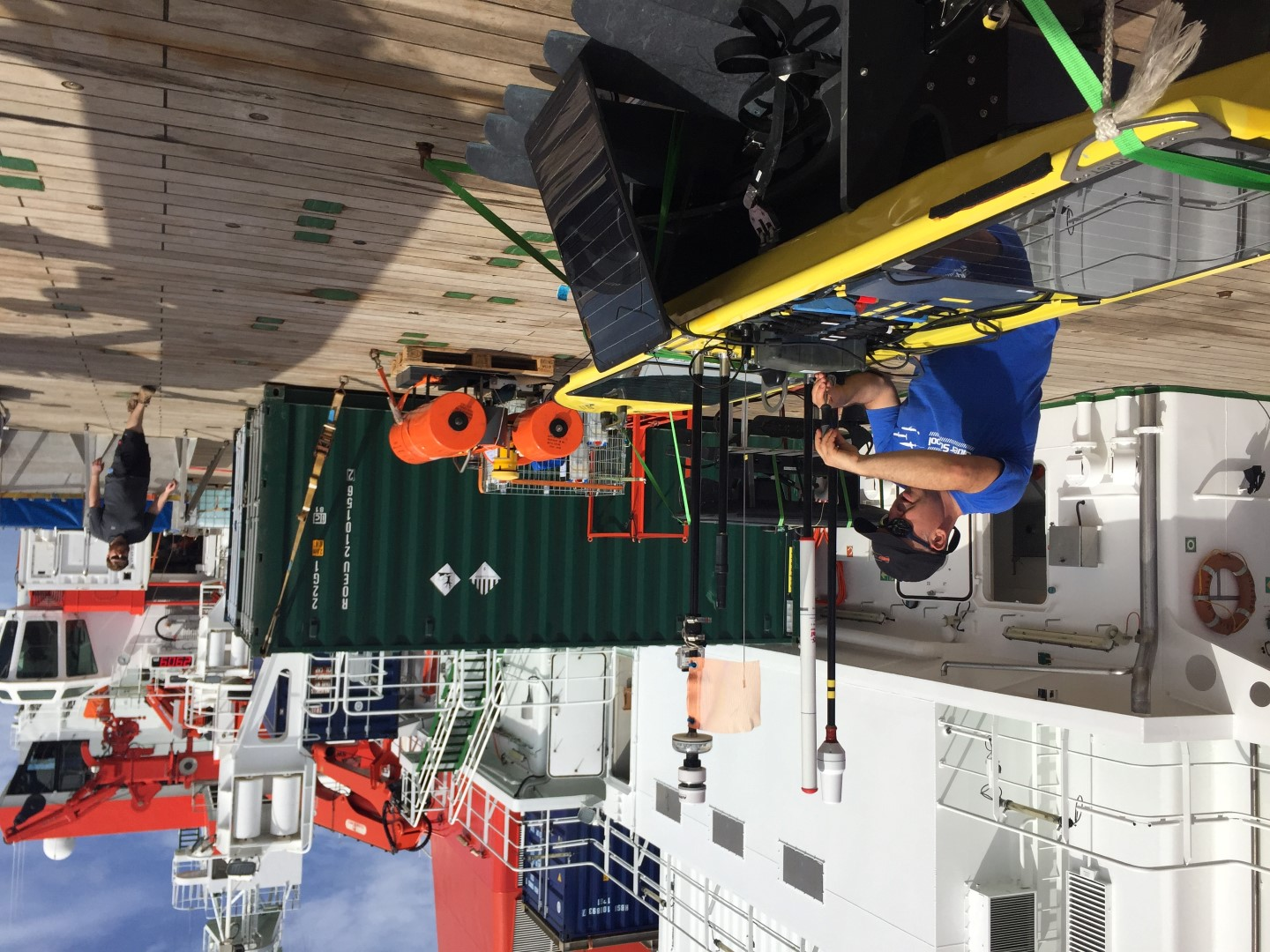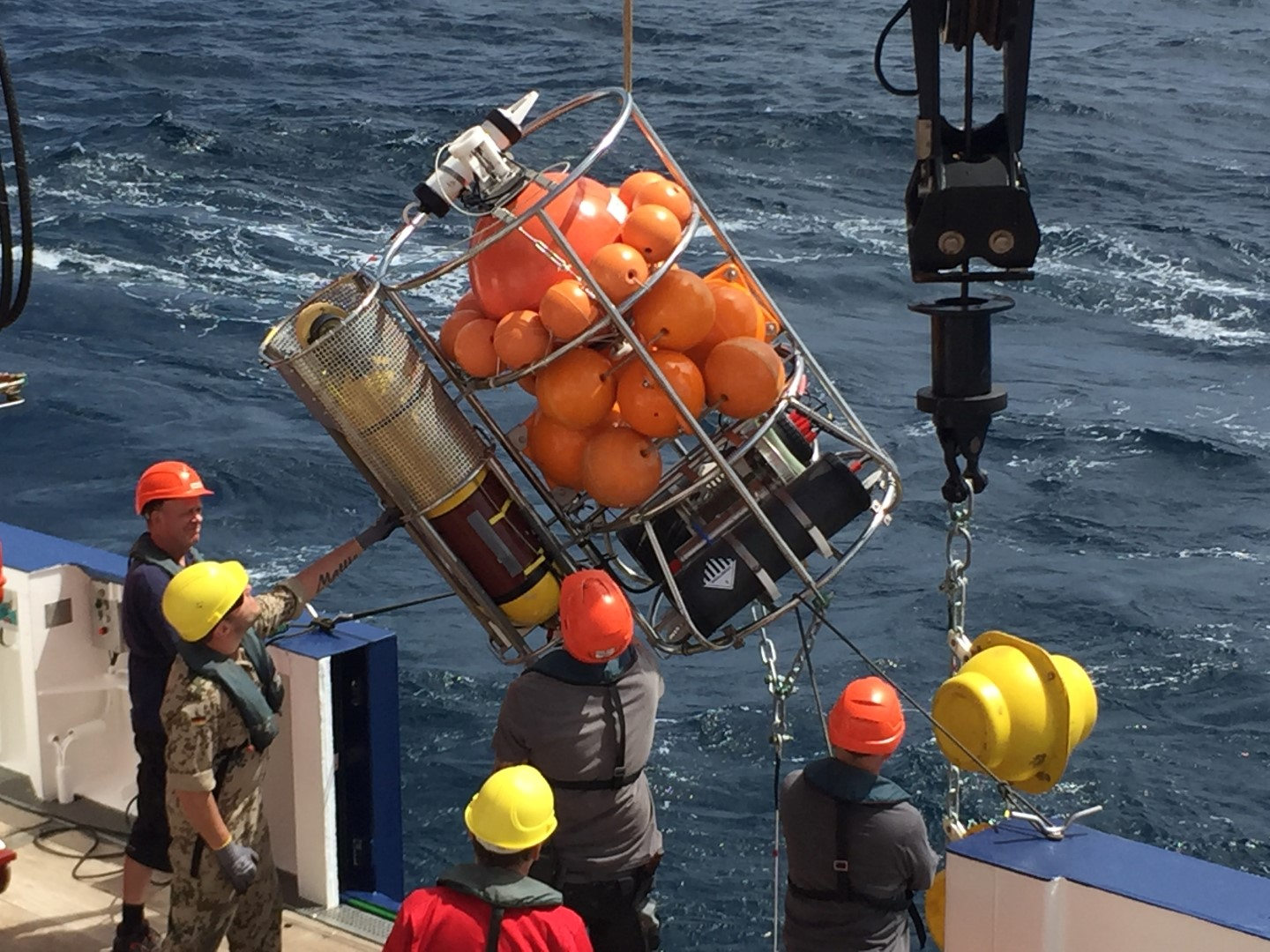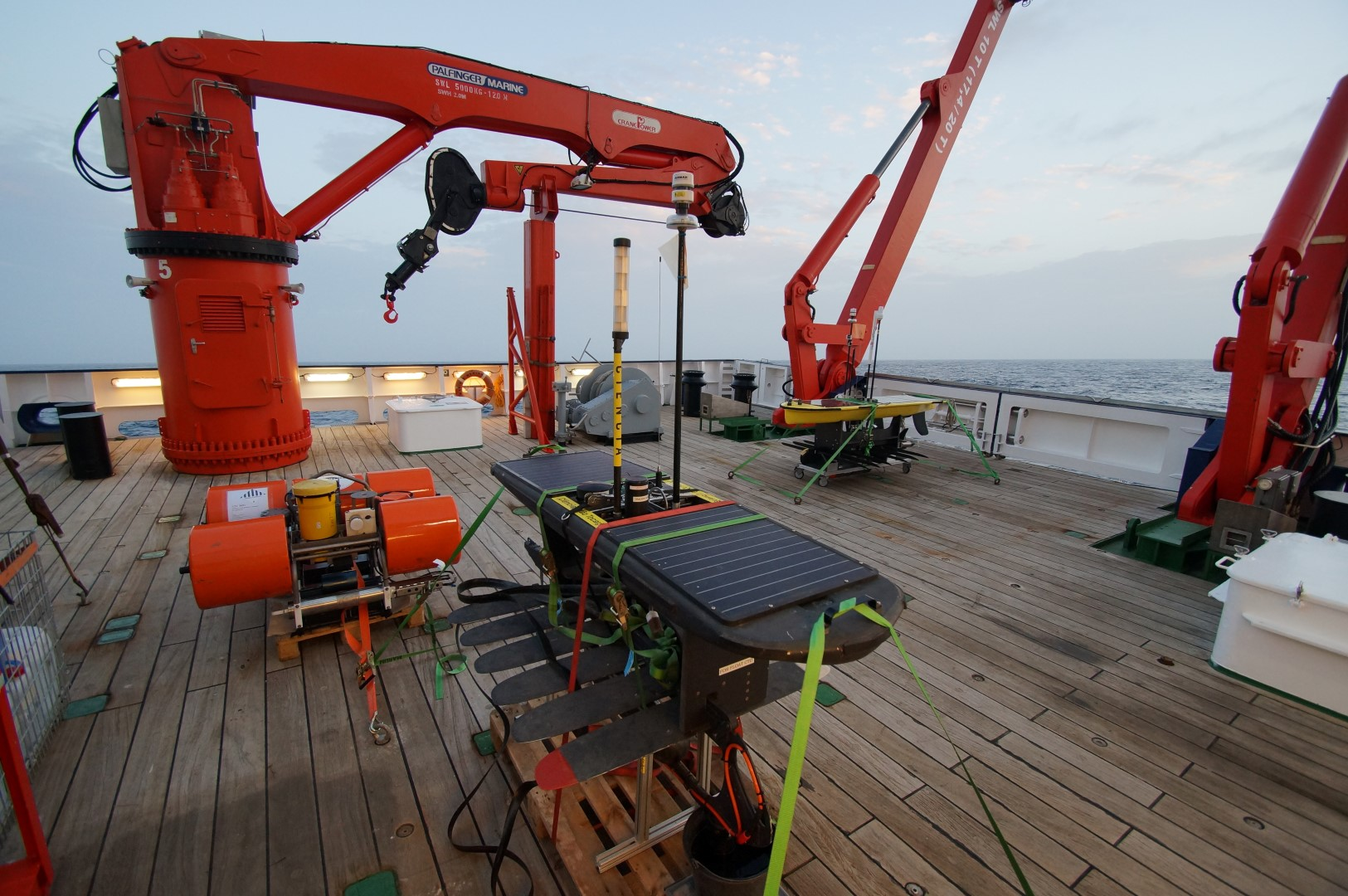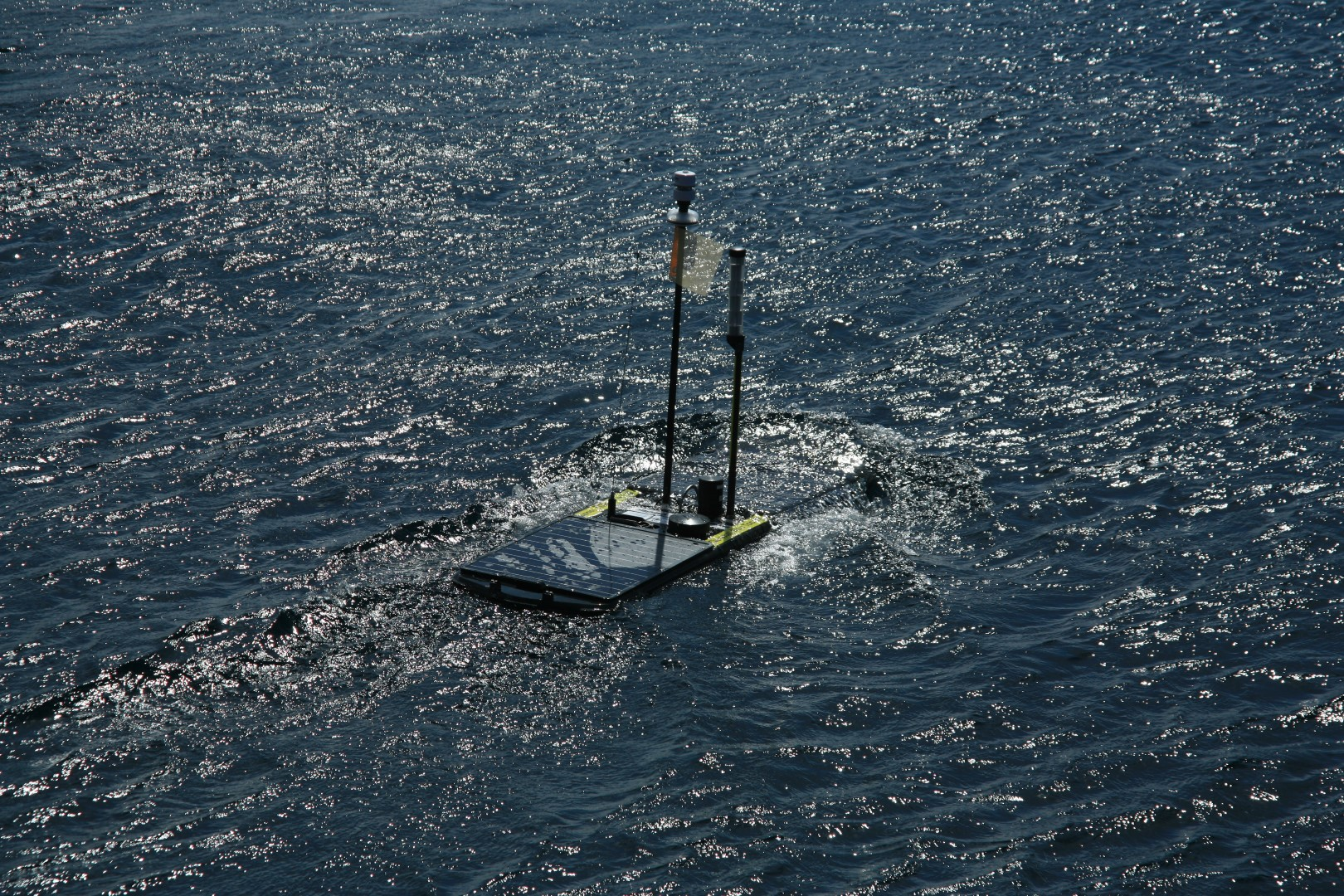 ---
---
A multi-disciplinary group of European and American scientists has set out on an oceanographic campaign aboard the German research vessel RV/Maria S. Merian to study the physical and bio-geo-chemical characterisation of the outstanding ecosystem of the Senghor Sea Mount located to the north of the Cape Verde Archipelago, and to assess the operational response and capability of new, autonomous oceanic observation technologies in real operational scenarios.
The ten-day scientific mission, code-named MSM61, is being conducted in the waters of Macaronesia between Cape Verde and the Canary Islands, starting in Mindelo and finishing in the port of La Luz and Las Palmas, with the participation of several German research institutions: GEOMAR (Helmholtz Centre for Ocean Research), MARUM (Centre for Marine Environmental Sciences), Thünen Institute, the American MBARI (Monterey Bay Aquarium Research Institute), the University of Aveiro in Portugal, the INDP (Instituto Nacional de Desenvolvimento das Pescas) from Cape Verde, the OECD (Organisation for Economic Co-operation and Development) through their area of Innovation and Spatial and Oceanic Policy, with headquarters in France, and the Canary Island Oceanic Platform (PLOCAN).
The study is part of the European AtlantOS Project, and includes deploying and operating a range of autonomous observation equipment and platforms, such as multi-parameter modules anchored in the water column and on the seabed, autonomous surface marine vehicles (gliders) - SV2 and SV3 Wave Gliders - and profilers (Slocum G2-1000), all fitted with specific sensor equipment for taking samples and data in-situ, in response the scientific and technical needs and objectives set for the mission and the project.
PLOCAN’s participation and contribution to the MSM61 mission focuses on deploying and operating an SV3 Wave Glider in co-operation with MBARI and MARUM, which was set up specifically in the months leading up to the mission with a set of physical and bio-geo-chemical sensor equipment, including a Doppler technology current metre (ADCP) and a pH sensor based on latest-generation spectrophotometry paired with a GPCTD-DO module to measure temperature, conductivity, pressure and dissolved oxygen in the sea water. Part of the work of developing and integrating this multi-parameter module has been done as part of the AEI-Gliders project, co-ordinated by the Canary Island Marine-Maritime Cluster, with the intervention of PLOCAN and MARUM, along with private companies SensorLab and Liquid Robotics.
After spending approximately one month in the area of the Senghor Sea Mount, the SV3 Wave Glider is expected to be piloted back to the Canary Islands remotely, constituting both a new technological and operational challenge and a good example of co-operation and contribution to the activities of the R3M regional oceanic observation programme (Red Marino Marítima de la Macaronesia) that is currently co-ordinated by PLOCAN.
